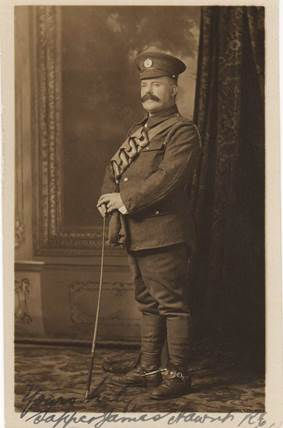
76805 2nd
Corporal
JAMES HAWNT
Royal Engineers
By
Lieutenant Colonel Edward De Santis, MSCE, P.E.,
MinstRE
(March 2023)

Figure 1. 76805 2nd
Corporal James Hawnt, R.E.
(Image from the author’s
collection)
INTRODUCTION
This narrative of the life and military service of James Hawnt was made possible by the acquisition of the man’s service papers and the location of his family tree on Ancestry.com. These two sources provided the majority of the details contained herein. The details of his military life were expanded by referring to numerous internet web sites and published military histories. Where no citations are presented regarding information in the narrative, the reader should assume that the information came from either a family tree or from Hawnt’s service papers.
2. FAMILY INFORMATION AND EARLY LIFE
Family Information
James Hawnt’s father, Henry George Hawnt (1839-1878) was born in Coventry, Warwickshire on 10 February 1839. His mother, Fanny Franklin (1841-1905) also was born in Coventry, on 5 September 1841. Henry and Fanny were married in Yardley, Worcestershire on 6 July 1862. At the time of their marriage Henry was a jeweler.
In addition to James, Henry Hawnt had six other children who appear to have been adopted by him when he married Fanny. The following is a list of these children and their relationship to James:
· Half-sister, Harriet Eliza Hawnt (1870-1934), born in Stafford, Staffordshire.
· Half-sister, Casandra Hawnt (1872-?), born in Sheffield, Yorkshire.
· Half-brother, Samuel Hawnt (1873-1947), born in Beham, Warwickshire.
· Half-sister, Annie Hawnt (1877-?), born in Sheffield, Yorkshire.
· Half-sister, Mary Hawnt (1877-?), born in West Bromwich, Staffordshire.
· Half-brother, John Whearley Hawnt (1884-1918), born in Beham, Warwickshire.
As can be seen, all of the children listed above were born after Henry married Fanny, however the Hawnt family trees found on Ancestry.com lists them as half-brothers and sisters; therefore, it must be concluded that they were Fanny’s children before she married Henry. James Hawnt was the only child of Henry and Fanny. This fact is substantiated by the family tree of Henry George Hawnt that shows James as their only child.
Henry George Hawnt died on 12 December 1878 in West Bromwich, Staffordshire. His death in 1878 brings up a curious question regarding the birth of John Whearley Hawnt in 1884. As can be seen from the list above, John was the only child shown in the family tree of Fanny Franklin, who was born after the death of Henry George Hawnt. The question is who was the father of John Whearley Hawnt?
Unfortunately the 1871 and 1881 Census of England could not be found for the Hawnt family. The 1891 Census was located and it shows the following make-up of the Hawnt family:
1891 Census of England
Address: 56 Eyre Street, Sheffield, Yorkshire[1] |
|||||
Name and Surname |
Relation |
Marital Status |
Age |
Profession or Occupation |
Birthplace |
Fanny Hawnt |
Head |
Widow |
49 |
|
Coventry, |
James Hawnt |
Son |
Single |
20 |
Telegraphist |
Stafford, |
Samuel Hawnt |
Son |
Single |
18 |
Type founder |
Birmingham, |
Mary Hawnt |
Daughter |
Single |
14 |
Silver burnisher |
West Bromwich, Staffordshire |
John Whearley Hawnt |
Son |
|
7 |
|
Beham, |
Robert Goodwin |
Son-in-Law |
Married |
23 |
Gas purifier |
Lincolnshire |
Harriet Eliza Goodwin |
Daughter |
Married |
21 |
|
Stafford, |
NOTE: Annie (age 14) and Casandra (age
19) do not show up in the Hawnt household in 1891. Annie may
have been away at school and given the size of the family and the
cost of keeping such a family, Casandra may have been away working
for another family.
Early Life
James (“Jimmie”) Hawnt was born in Stafford, Staffordshire on 24 March 1871. In some family trees found on Ancestry.com his name is given as James William Hawnt; however, his birth certificate shows his name to be simply James.[2]
As indicated in the Hawnt family tree, he was the only biological child of Henry George and Fanny Hawnt. He remained in the family home as a young man and studied to become a telegraphist. On 11 May 1891 he was certified by the Civil Service Commissioners (without competition) as a qualified Sorting Clerk and Telegraph Learner at the Sheffield Post Office.[3]
In October 1895 James married Maud Elizabeth Musgrave (1863-1941) at Saint Andrews Church in Grimsby, Lincolnshire. Maud was born on 17 May 1863 in East Drayton, Nottinghamshire, the daughter of George Musgrave (1824-1891) and Mary Ann Musgrave (1829-1875), née Burbank. Maud’s first marriage was to John Edward Hoggard (1861-1934). They had a daughter, Maud Herman Paul Hoggard (1890-1964). Presumably following a divorce, Maud married James Hawnt. Their first child, Edmund B. Hawnt was born in 1897 in Ecclesall Bierlow, West Riding, Yorkshire. Tragically, young Edmund died the following year.
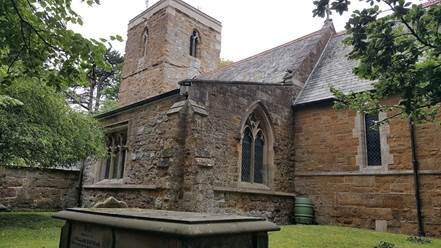
Figure 2. St. Andrews Church, Grimsby,
Lincolnshire.
(Image courtesy of Wikipedia)
The 1901 Census of England shows the composition of James Hawnt’s household at that time (i.e., 31 March 1901) and it is shown in the table below.
1901 Census of England
Address: 45 Worth Road, Sheffield, Yorkshire.[4] |
|||||
Name and Surname |
Relation |
Marital Status |
Age |
Profession or Occupation |
Birthplace |
James Hawnt |
Head |
Married |
30 |
Telegraphist, |
Stafford, |
Maud Elizabeth Hawnt |
Wife |
Married |
36 |
|
East Drayton, |
Maud Hawnt |
Daughter |
|
11 |
|
Newcastle, Northumberland |
NOTE: Maud Hawnt was actually James
Hawnt’s stepdaughter, as she was the daughter of Maud and John
Edward Hoggard.
Between the census of 1901 and 1911 James and Maud had three additional children: Eleanor Hawnt (1902-?) born in Sheffield, Yorkshire, James Stuart Hawnt (1903-1994), born in Ecclesall, Bierlow, West Riding, Yorkshire on 5 April 1903 and Sheila Hawnt (1910-?) born in Sheffield, Yorkshire. The table below shows the composition of James Hawnt’s family on 2 April 1911, the date of the 1911 Census of England and Wales.
Address: 96 Ranby Road, Sheffield, Yorkshire. |
|||||
Name and Surname |
Relation |
Marital Status |
Age |
Profession or Occupation |
Birthplace |
James Hawnt |
Head |
Married |
40 |
Telegraph Operator |
Stafford, |
Maud E. Hawnt |
Wife |
Married |
47 |
|
East Drayton, |
Eleanor Hawnt |
Daughter |
|
9 |
School |
Sheffield, |
James Stuart Hawnt |
Son |
|
7 |
School |
Sheffield, |
Sheila Hawnt |
Daughter |
|
1 |
|
Sheffield, |
NOTE: Maud Hawnt would have been 21
years old at the time of this census and perhaps had gotten married.
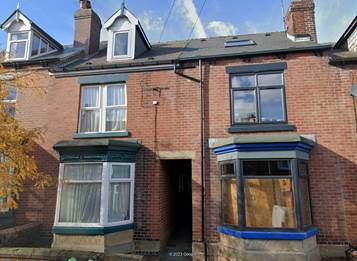
Figure 3. 96 Ranby Road, Sheffield,
Yorkshire.
(Image courtesy of Google Earth)
2. PHYSICAL DESCRIPTION
The image in Figure 1 provides a very good indication of what James Hawnt looked like in 1915 when he enlisted in the Army. One can see that he was a short, stocky man with a broad chest and a rather large stomach. The Descriptive Return in his service papers, prepared from a medical examination in February 1915 at the time of his recruitment for service in the Royal Engineers, provides the following details:
Age: |
43 years and 11 months |
Height: |
5 feet 4 inches |
Weight: |
186 pounds |
Girth fully expanded: |
42 inches |
Range of expansion: |
2 inches |
NOTE: By today’s medical standards, with a height of 64 inches and a weight of 186 pounds, James Hawnt’s Body Mass Index would have been 32. An adult who has a BMI of 30 or higher is considered obese.
3. RECRUITMENT, ENLISTMENT AND TRAINING
Recruitment
On 9 February 1915 James Hawnt submitted an application for special enlistment in the Royal Engineers, Regular Army. The war was only six months old when he felt the need to join the Colours. His age and his marital status probably would have exempted him from service, but he felt the need to join up. One has to wonder what motivated this man to enlist in the Army and go to war. He was almost in his mid-forties at the time and physically not the image of a soldier, with a wife and three children at home. As a telegraphist for the Post Office he probably was earning a good wage, certainly more than he would be paid as a soldier. His dedication to his country has to be admired.
His application was sent to the Director of Army Signals, Home Defence, who in turn forwarded it to the Secretary, War Office. An officer at the War Office commented on the application saying “apart from obesity and age [Hawnt] compares well with men of his age.” His physical condition and age were both considered at the time, but as he was an experienced telegraphist, the War Office considered that a rear-area posting could be found for him. Although James Hawnt was a short, overweight, and barrel-chested man, he appears to be a man with a great deal of self confidence as evidenced by his appearance in the photograph in Figure 1.
The War Office recommended approval of Hawnt’s application stating that: “Mr. J. Hawnt is an experienced telegraph operator.” Hawnt’s application was accepted by the Director of Army Signals and an officer by the name of Andrew MacColl of a Signal Company in Glasgow was given the task of processing Hawnt’s enlistment.
Enlistment
On 13 February 1915 Hawnt took the Short Service Attestation for the Royal Engineers Signal Service. He was asked the questions normally put to a recruit at the time of enlistment and he answered that his residence was 65 Brunswick Street, Broomhall Park, Sheffield, Yorkshire where his family was located. He was 43 years and 11 months old and he was married. Hawnt indicated that he had no prior naval or military service, he was willing to be vaccinated, he was enlisting for General Service and for the duration of the war. The recruiting officer noted that Hawnt’s trade was “Telegraphist – Office” and that his classification in this trade was “Skilled,” due no doubt to his many years as a telegraphist for the Post Office.
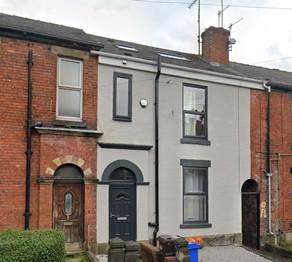
Figure 4. 65 Brunswick Street, Broomhall Park,
Sheffield, Yorkshire.
(Image courtesy of Google Earth)
Hawnt’s attestation was approved by a Magistrate in Glasgow on 13 February 1915 and he was assigned Regimental Number 76805 and the rank of Sapper. His Regimental Number fell within the range of numbers assigned to men in the Royal Engineers Signal Service; that is, between 70000 and 78999. His number in the 76XXX range normally was assigned to men posted to the General Headquarters Signal Company of the British Expeditionary Force.
On 6 April 1915 Hawnt’s enlistment for service was certified by the Approving Officer at the Royal Engineers Signal Service Training Centre in Hitchin, Hertfordshire. By the time that this was done, Hawnt had already undergone almost two months of training at Hitchin.
Training
Hawnt received the basic training requiring of a new recruit, although due to his age and physical condition his training regime must have been modified. He surely learned the customs of the service, how to wear the uniform, some basic drill instructions and perhaps some musketry training. The majority of his training most certainly was of a technical nature dealing with telegraph and perhaps telephone and wireless communication.
4. POSTINGS, ASSIGNMENTS AND CAMPAIGN SERVICE
Fourth Army Headquarters Signal Company (1916)
Upon the completion of his training he was posted to a section of the Fourth Army Headquarters Signal Company,[5] which was preparing to sail to France. The company landed in France on 28 January 1916. The addition of the Fourth Army to the British Expeditionary Force took place on 5 February 1916. It was initially placed under the command of General Sir Henry Rawlinson.[6] The Fourth Army remained on the Western Front throughout the rest of the war along with Hawnt’s company in close proximity to the Army HQ. [7]
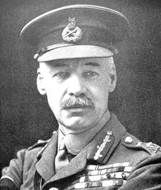
Figure 5. General Sir Henry Rawlinson, G.O.C.,
Fourth Army.
(Image courtesy of Wikipedia)
Before describing the movements of the Fourth Army Headquarters Signal Company during the war it would be of interest to know what a telegraphist in such a unit did when on active service during a time of war. There were seven telegraph systems established at the Army level that would require someone of Hawnt’s abilities. These systems were telegraph communications between the Army HQ and subordinate units for command purposes and for administrative purposes. For command purposes the Officer Commanding the company was held responsible for the maintenance and construction of lines in the rear of Corps headquarters. The Army HQ Signal Company also communicated with the Royal Flying Corps and was part of the Intelligence and Observation system, the Anti-Aircraft Defence system, the Light Railways system, and the Reserve Areas system. All urgent traffic within these systems were dealt with by telegraph.[8]
The Army signal company and its affiliated units had as much work on their hands as they could readily attend to. Even in quiet times everyone was fully occupied. In the feverish preparation for an offensive and while the lines were burdened with the thousands of important “operations” messages which marked the progress of a battle, it was all the company could do to keep the system in order and to ensure the smooth working of the exchanges, both telephone and telegraph.[9]
By 24 February 1916 Hawnt’s company was located in the area of Querrieu.[10] On 13 May 1916 Sapper Hawnt was admitted to hospital, was treated, and returned to his unit on the same day. Unfortunately his service papers did not indicate the ailment that he suffered from. From his records it appears that after he returned to his unit he left again, possibly to return to hospital or to a rest area. He rejoined the Fourth Army HQ Signal Company again on 11 June 1916. This absence did not appear to have affected his performance of duty as he was appointed an Acting 2nd Corporal on 14 June.
The Battle of Morval
July, August, and most of September of 1916 were easy periods for Hawnt as the Fourth Army was not heavily committed to actions at the front. This slack period came to an end in the last week of September at the Battle of Morval. The Battle of Morval took place from 25 to 28 September 1916. It was an attack as part of the Battle of the Somme by the British Fourth Army on the villages of Morval, Gueudecourt and Lesbœufs held by the German 1st Army. These towns had been the final objectives of the Battle of Flers–Courcelette (15 to 22 September). The main British attack was postponed combining with attacks by the French Sixth Army on the village of Combles south of Morval.[11]
The Battle of Le Transloy
The Battle of Le Transloy from 1 to 18 October followed quickly upon the actions at Morval and the other villages. This battle was the last big attack by the Fourth Army in the 1916 Battle of the Somme in France. The battle was fought in conjunction with attacks by the French Tenth and Sixth Armies on the southern flank and the Reserve/Fifth Army on the northern flank, against Army Group Rupprecht of Bavaria.[12] During this period Hawnt was promoted to the substantive rank of 2nd Corporal.
The Battle of the Ancre
The Fourth Army next took part in the Battle of the Ancre from 13 to 18 November 1916. This battle was fought against the German 1st Army under General Fritz von Below. The battle was the last of the big British attacks of the Battle of the Somme. After the Battle of Flers–Courcelette from 15 to 22 September the Anglo-French armies tried to press their advantage with smaller attacks in quick succession, rather than pausing to regroup and give the Germans time to recover.
Fourth Army Headquarters Signal Company (1917)
Early in 1917 Hawnt’s company made many moves in preparation for coming actions. It was located at Villers Carbonnel on 15 April, at Malo-les-Bains on 5 July, at Rosendael (near Dunkirk) on 25 October, at Dury on 5 November and at Cassel on 9 November where the Fourth Army relieved the Second Army. These moves were in preparation for a large offensive operation by the Fourth Army.[13]
The plan for the Fourth Army during the Third Battle of Ypres, from 31 July to 10 November 1917, was to mount Operation Hush, an amphibious invasion of the Belgian coast. Once the Germans had been pushed back from the Passchendaele–Westrozebeke ridge and an advance begun on Roeselare and Torhout, the British XV Corps would mount the coastal operation. As the Ypres fighting became bogged down, the Fourth Army divisions were drawn off as reinforcements until the army was effectively disbanded.[14]
On 20 December 1917 what had been the Second Army was renamed the Fourth Army. During this reorganization period the Fourth Army HQ Signal Company appears to have remained intact, but with little to do. 2nd Corporal Hawnt was granted leave to the U.K. on this day.
Fourth Army Headquarters Signal Company (1918)
Hawnt returned to his unit from leave on 4 January 1918 while the reorganizations of the Armies were still underway. On 13 March 1918 the Fourth Army was reformed — once again under Rawlinson — following the virtual destruction and subsequent disbanding of the Fifth Army during the German offensive known as Operation Michael. The Fourth Army spearheaded the British Hundred Days offensive that began with the Battle of Amiens and ended with the Armistice in November 1918.
On 22 March Hawnt’s company was back at Querrieu where it had first started the war. On 25 March the company was at Picquigny-sur-Somme and on 27 March it was at Abbeville. On 28 March the Fourth Army took command of Fifth Army units with the Fifth Army ceasing to exist on 2 April.[15]
Hawnt’s company continued to change locations along with the Army HQ in preparation for the offensive actions to come. On 30 March the company was at Auxi-le-Chateau, on 31 March it was at Flixecourt and by 2 April it was at Dury.[16]
The Battle of the Avre
The Battle of the Avre (4 to 5 April 1918), part of the First Battle of Villers-Bretonneux, constituted the final German attack towards Amiens. It was the point at which the Germans got the closest to Amiens. It was fought between attacking German troops and defending Australian and British troops. The attack was an attempt to take Amiens, where other aspects of Operation Michael had failed. The Avre marked the beginning of the end for Ludendorff’s German spring offensive.[17] During this battle the Fourth Army HQ Signal Company was at Dury on the first day and at Flixecourt on the second day.
The Second Battle of Villers-Bretonneux
Hawnt’s company next took part in the Second Battle of Villers-Bretonneux from 24 to 25 April 1918. The Second Battle of Villers-Bretonneux took place from 24 to 27 April 1918, during the German spring offensive to the east of Amiens. It is notable for being the first occasion on which tanks fought against each other; it was the biggest and most successful tank action of the German army in the Great War.[18] The company was not involved in the entire battle and was only credited with participation in it from 24 to 25 April.[19]
The Battle of Amiens
Next came the Battle of Amiens, also known as the Third Battle of Picardy. It was the opening phase of the Allied offensive which began on 8 August 1918. This operation later became known as the Hundred Days Offensive that ultimately led to the end of the Great War. Allied forces advanced over 7 miles on the first day, one of the greatest advances of the war, with General Sir Henry Rawlinson's Fourth Army (with 9 of its 19 divisions) supported by the fast moving Australian Corps of Lieutenant General John Monash and Canadian Corps of Lieutenant General Arthur Currie, both playing decisive roles.[20] The Fourth Army HQ Signal Company took part in this action from 8 to 11 August.[21]
The Battle of Albert
From 21 to 23 August Hawnt’s company took part in the Battle of Albert. The Battle of Albert was the third battle by that name fought during the war. This third battle was significant in that it was the opening push that would lead to the Second Battle of the Somme and involved the Australian Corps. This attack opened the advance; the main thrust was launched by the Third Army along with support from the Fourth Army.[22]
The Second Battle of Bapaume
On 30 August 1918 Hawnt’s company was at Bertangles preparing for the offensive action to be known as the Second Battle of Bapaume. The Second Battle of Bapaume lasted from 21 August to 3 September 1918. It was a continuation of the Battle of Albert and is also referred to as the second phase of that battle. The British and Dominion attack was part of what was later known as the Allies' Hundred Days Offensive.[23]
The Battle of Épehy
Next came the Battle of Épehy. This battle was fought on 18 September 1918, involving the British Fourth Army, still under the command of General Sir Henry Rawlinson, against German outpost positions in front of the Hindenburg Line. The village of Épehy was captured on 18 September by the 12th (Eastern) Division.[24] Following this battle the Fourth Army HQ Signal Company moved to Eterpigny on 25 September in preparation for the final offensive operation of the war known as the Pursuit to Mons, which began on 28 September.[25]
The Battle of St. Quentin Canal
From 29 September to 2 October 1918, Hawnt’s company took part in the Battle of St. Quentin Canal. This was a pivotal battle of the war that involved British, Australian, and American forces operating as part of the British Fourth Army under the overall command of General Sir Henry Rawlinson. Further north, part of the British Third Army also supported the attack. South of the Fourth Army's 12-mile front, the French First Army launched a coordinated attack on a 6 mile front. The objective was to break through one of the most heavily defended stretches of the German Siegfriedstellung (Hindenburg Line), which in this sector used the St. Quentin Canal as part of its defences. The assault achieved its objectives (although not according to the planned timetable), resulting in the first full breach of the Hindenburg Line, in the face of heavy German resistance. In concert with other attacks of the Grand Offensive along the length of the line, Allied success convinced the German high command that there was little hope of an ultimate German victory.[26]
The Battle of Beaurevoir
Hawnt’s Company is credited with supporting the operation during the Battle of Beaurevoir, which took place from 3 to 5 October 1918. The Beaurevoir Line was the last of a series of German defensive lines known collectively by the Allies as the Hindenburg Line. It was approximately five miles to the rear of the main Hindenburg Line and consisted of thick barbed wire entanglements and well-sited machine-gun and anti-tank gun bunkers. The bulk of the trenches, however, were only partly dug. The original attack on the Hindenburg Line launched on 29 September had been intended to smash right through the Beaurevoir Line as well, but had not succeeded in this objective. Along with the 46th British Division, the 2nd Australian Division of the British Fourth Army was ordered to break through the Beaurevoir Line on 3 October 1918. The Australians were to seize the village of Beaurevoir, and the British Montbrehain. The Australian attack was a success, but was stopped short of the village due to insecure flanks. The British captured Montbrehain, but were unable to retain it. After an ill-fated attempt to capture Beaurevoir on 4 October, the 6th Australian Brigade was launched against Montbrehain the next morning. The village was secure by the end of the day, but came at the expense of 430 casualties - a cost regarded as excessively high for such a limited objective. The action at Montbrehain was the last battle fought by Australian infantry during the war.[27]
The Battle of Cambrai
The Battle of Cambrai, also known as the Second Battle of Cambrai, involved troops of the British First, Third and Fourth Armies and German Empire forces during the Allies Hundred Days Offensive of the war. The battle took place in and around the French city of Cambrai, between 8 and 10 October 1918. The battle incorporated many of the newer tactics of 1918, in particular tanks, with over 300 tanks taking part and the Allies gaining considerable ground in less than 36 hours.[28]
The Battle of the Selle
By 11 October, the Fourth Army had closed up on the retreating Germans near Le Cateau, with the Germans taking up a new position, immediately to the east of the Selle River. On 14 October the Fourth Army HQ Signal Company was at Montigny Farm. General Sir Henry Rawlinson’s headquarters was located on a train. Rawlinson was faced with three problems for this battle: crossing the river, the railway embankment on the far side and the ridge above the embankment. The decision was made to commence the assault at night, and as the river was not very wide at this point, planks would be used for the soldiers to cross in single file. Later, pontoons would be required for the artillery to cross the river, making this truly an engineer battle. The battle lasted from 17 to 25 October. During this battle Hawnt’s company suffered its only fatality during the war; 254928 Pioneer William Kenyon, R.E. died on 25 October and is buried at Villers-Bretonneux.[29]
On 3 November 1918 the Fourth Army HQ Signal Company was located near Honnechy and the HQ itself was still located on a train. The pursuit of the German forces to the Mons had ended and on 11 November 1918 the Germans surrendered. The company moved to Avesnes on 16 November, to Ham-sur-Heure on 30 November and to Namur on 10 December where units began to demobilize and/or return home. Nowhere in Hawnt’s service papers does it show when he returned home.
5. DISCHARGE
2nd Corporal James Hawnt was demobilized at Dispersal Unit No. 3 in Clipstone, Nottinghamshire on 2 March 1919. He was transferred to the Class “Z” Reserve in the rank of 2nd Corporal, Royal Engineers. His service papers show that his Medical Category was A1 (fit for dispatching overseas, as regards physical and mental health and training). The papers also show that he was awarded a Disability Code 20 to indicate that he had suffered from the effects of dysentery. This illness may have been the reason for his hospitalization early in his deployment to France. It appears that Hawnt may have applied for disability due to this illness; however, a medical board had considered his case and had concluded that there were no grounds for the award of disability. His service papers show that the board concluded “Percent disability: NIL. No disability found.” Hawnt’s Protection Certificate and Certificate of Identity shows that he was serving with the “4th Army Sig Co” at the time of his demobilization, that his place of rejoining the Army in case emergency was Newark and that his Special Military Qualification was Operator. Oddly the word Telegraphist was not included in his qualification. Hawnt indicated that his intended place of residence after leaving the Army was to be his 65 Brunswick Street address in Broomhall, Sheffield.
James Hawnt’s military service was reckoned as shown in the table below.
Station |
From: |
To: |
Years & Days |
Hitchin |
13 February 1915 |
27 January 1916 |
349 days |
France and Flanders |
28 January 1916 |
31 December 1918 |
2 years & 334 days |
Clipstone |
1 January 1919 |
2 March 1919 |
61 days |
Total Service: |
4 years & 14 days |
||
NOTE: His date of return to the UK after the war has been estimated.
The idea of Hawnt having to be called up to rejoin in case of an emergency seems ludicrous. He was almost 44 years old when he enlisted in 1915 and by the time he was discharged he was almost 48 years old. His Medical Category of “A1” also seems questionable, although he may have lost a good deal of weight after four years of Army food and the physical exertion associated with his military service. However, he was still a man pushing 50 years of age and it seems that he would not be suitable for recall unless it was for an office telegraphist posting at a home station.
________________________________________________
The following sections are presented in tabular form to summarize James Hawnt’s promotions, appointments, military training and qualifications and the medals that he was awarded during his time in the Army. They are provided to give the reader easy access to these aspects of his military career. The tables are followed by sections dealing with his marriage, personal information and post-service life.
__________________________________________________________________________
Date of Promotion or Appointment |
|
13 February 1915 |
Sapper, upon enlistment in the Royal Engineers |
14 June 1916 |
Appointed Acting 2nd Corporal |
16 October 1916 |
Promoted 2nd Corporal |
NOTE: Hawnt skipped over the rank of Lance Corporal and was promoted to 2nd Corporal from the rank of Sapper. This rapid promotion may be the result of his being a “Skilled” Telegraphist assigned to an Army Headquarters. It may also be because no positions of Lance Corporal existed in the structure of the Army HQ Signal Company. (See Annex A).
There are no comments in his service papers to indicate that any disciplinary actions were taken against him during his time in the Army. There are no indications of his earning a Good Conduct Badge, but he surely would have earned at least one during his four years of service.
8. MEDALS, AWARDS AND DECORATIONS
2nd Corporal James Hawnt was awarded the British War Medal and Victory Medal for his service during the Great War of 1914-1918 as indicated by his Medal Index Card.
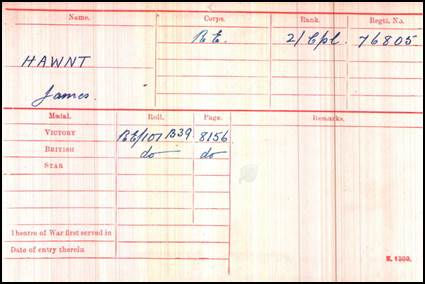
Figure 6. The Medal Index Card of 2nd
Corporal James Hawnt, R.E.
(Image courtesy of
Ancestry.com)
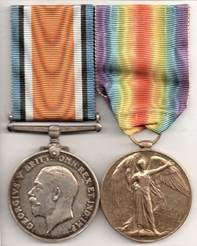
Figure 7. The British War Medal and Victory
Medal.
(Image from the author’s collection)
NOTE: The medals shown in Figure 7 above are not the medals of James Hawnt. The whereabouts of his medals are unknown. The image is provided to show the reader what these medals look like.
James Hawnt’s service papers contain two puzzling documents with regard to the issue of his medals. There is a receipt in his papers dated 19 April 1921 showing the issue to him of the British War Medal. There is a second receipt in the papers dated 9 August 1921 showing the issue of both the British War Medal and Victory Medal. Could Hawnt have received two British War Medals?
9. EDUCATION AND QUALIFICATIONS
Education
No information was readily available regarding James Hawnt’s education except that at some point in his early life he had learned to be a telegraphist. As previously stated, in 1891 he was certified by the Civil Service Commission as a “Telegraph Learner.” This term must imply that he received instructions regarding Morse Code and the use of telegraph equipment while working at the Post Office.
Qualifications
He obviously had qualified as a Telegrapher as early as 1891 while working for the Post Office in Sheffield. Twenty four years later when he joined the Army he was classified as a “Skilled” Office Telegraphist upon his enlistment in the Royal Engineers and he used his skills for all the years that he served with the Fourth Army H.Q. Signal Company. Upon his discharge from the Army his Special Military Qualification was that of Telegraphist. He used this qualification to resume his work at the Post Office after leaving the Army.
Marriage
James’ first wife, Maud Elizabeth died on 12 February 1941 in Sheffield. They had had four children together as previously stated. James married a second time to Lilian Hollely in Sheffield in December 1941. James was 70 years old at the time and Lilian was 58. Lilian died in Sheffield in September 1972 at the age of 89.
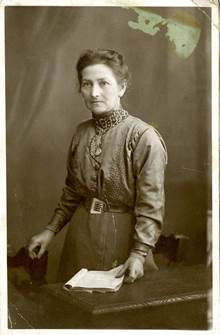
Figure 8. Maud Elizabeth Hawnt.
(Image
courtesy of Robert Melvyn Hopkins)
Children
Eleanor Hawnt, the eldest child of James and Maud married James Wilfred Gathercole (1899-1934) in Cemetery Road Baptist Chapel on 1 September 1928. Her husband died on 25 June 1934 and Eleanor lived the remainder of her life as a widow in West Yorkshire. She died in Stowmarket, Suffolk on 28 July 1986 at the age of 85.
The Hawnt’s son, James Stuart Hawnt, appears to have remained a bachelor all his life. James became a doctor and Director of Education for Belfast, Ireland. He died in Leominster, Herefordshire on 23 February 1994 at the age of 90.
The youngest child in the Hawnt family, Sheila Hawnt, also appears to have remained unmarried during her lifetime. No details of her life were uncovered during this research. She died on 3 January 1997 (location unknown) at the age of 87.
Parents
James’ father had a short life. As previously discussed, Henry George Hawnt was born in Coventry, Warwickshire on 10 February 1939. When he married Fanny Franklin in 1862 their marriage certificate shows Henry’s occupation as a Jeweler. He died in West Bromwich, Staffordshire on 12 December 1878 at the age of 39.
James’ mother, Fanny Hawnt, née Franklin, died in Ecclesall Bierlow, West Riding Yorkshire in January of 1905 at the age of 63.
Siblings
James Hawnt had six siblings that appear to have been children of his mother Fanny by another husband, thus making the siblings half-brothers and half-sisters.
Harriet Eliza Hawnt (1870-1934) married Robert Goodwin (1868-1934) in Ecclesall Bierlow, Yorkshire in June 1889. It appears that they did not have any children. Harriet died in Blackpool, Lancashire at the age of 64.
Casandra Hawnt (1872-?) does not appear to have married. There is no information about her life on any of the family trees, not even her year of death.
Samuel Hawnt (1873-1947) married Sarah Elizabeth Crow (1875-1946) in Ecclesall Bierlow, Yorkshire, sometime after 1 April 1895. Samuel and Sarah had a son, Hector Hawnt (1900-1947) who was born on 22 June 1900 in Sheffield, Yorkshire.
Annie Hawnt (1877-?), like Casandra, does not appear to have married. There is no information about her life on any of the family trees, not even her year of death.
Mary Hawnt (1877-?), married Michael Joseph Kelly (1874-?) in Sheffield, Yorkshire, sometime after 1 April 1899. They do not appear to have had any children. Mary died after 1934 at the age of about 58.
John Whearley Hawnt (1884-1918), married Emma Hancock in Sheffield in 1914. John and Emma had a son, Ronald Hawnt (1915-1992) born in Sheffield on 19 February 1915. John served as an infantry Private in the Great War of 1914-1918. He initially served in the Durham Ligh Infantry (Regimental Number 41098) and then was transferred to the Labour Corps (Regimental Number 20018) and then to the 8th Battalion of the Border Regiment (Regimental Number 28983). He was killed in action in France and Flanders on 22 March 1918. The following is a description of the action involving the 8th Battalion of the Border Regiment on 22 March 1918, taken from the battalion’s war diary.
Shelling began early and the enemy attacked about 7.30am – penetrated VAULX WOOD on our right. The Battalion was surrounded on 3 sides – for 4 hours Captain Birnie held the enemy at bay & only withdrew at 1pm our right being in the air - & the [ Division?] on our left falling back. - All communication with Artillery & Brigade was cut – Battalion withdrew to VAULX-FRENICOURT road. During the day Lieutenants Dowdell, McTavish & Warwick were killed The Battalion n eventually reorganized in ARMY LINE assisted by Scottish troops (51st Division). Battalion relieved by 41st Division, except Lieutenants Oakden and Fentiman and 24 Other Ranks who refused to leave until proper relief which never came. Lieutenant Fryer missing. Captain Birnie, Lieutenant Gandolfo, 2nd Lieutenants Lightfoot & Sandwell wounded.
Private Whearley was one of the many battalion casualties suffered during this difficult action for the 8th Battalion of the Border Regiment. The Commonwealth War Graves Commission has erroneously spelled Whearley middle name as “Wheatley” on his commemorative certificate.
12. POST SERVICE LIFE
After leaving the Army James Hawnt returned to his previous work as a Telegraphist for the Post Office in Sheffield. He also became active in politics. In 1927 he was elected to the Sheffield City Council for the Sharrow Ward, running as a member of the Socialist Party. He was also an Alderman.[30]
On 12 February 1929 Hawnt was made a Councillor for the Neepsend Ward in the City of Sheffield.[31] He remained a member of the City Council for 22 years. In his council work he was chairman of the Libraries, Art Galleries and Museums Committee. He also was a member of the Sheffield Education Committee. The 1939 Register of England and Wales shows him residing at 310 Abbey Lane in Sheffield and lists his occupation as “Retired Telegraphist, Post Office.” His wife, Maud E. Hawnt, also appears in the Register along with Eleanor Hawnt, a widow and schoolteacher, Eleanor being his eldest daughter. For some reason Eleanor chose to revert to her maiden name rather than continuing to use her married name as the widow of James Wilfred Gathercole.
As previously mentioned, James’ first wife, Maud, died in early 1941 and by the end of that year he had married a second time. James died suddenly at his home on 20 October 1949 at 57 Dalewood Road in Sheffield at the age of 78. His funeral service was held in Montgomery Hall in Sheffield as he had been connected with the Hall and the Sheffield Sunday School Union of which he was the Secretary for nearly half a century. A host of mourners attended his funeral from the Methodist churches (he had been a Methodist local preacher for 60 years), the Sunday School Union, the City Council, and the Post Office – where he had worked for 40 years – and hundreds of others representing organizations from all over the city.
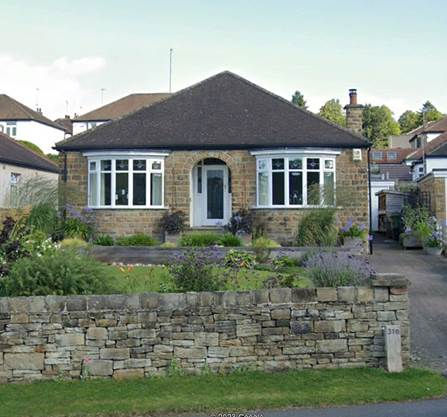
Figure 9. 310 Abbey Lane, Sheffield,
Yorkshire.
(Image courtesy of Google Earth)
Figure 10. Obituary Photograph of |
The week prior to his death former Alderman Hawnt visited London and Newcastle on work-related business. Probate of his Will took place in London on 25 November 1949 with his effects being left to his widow, Lilian Hawnt. These effects amounted to £1655-12s-6d (about $79,600 US in 2022 currency. Lilian died in September 1972 in Sheffield. |
|
|
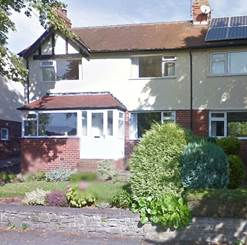
Figure 11. 57 Dalewood Drive, Sheffield,
Yorkshire.
(Image courtesy of Google Earth)
13. EPILOGUE
2nd Corporal James Hawnt and the men of the Fourth Army Headquarters Signal Company took part in 13 major battles of the Great War. While they were not in the front line where the action was the heaviest, they certainly had much work to do to establish the lines of communication within the Fourth Army and to supporting units outside of the Fourth Army area. The company lost one man during its time in France and Flanders. It is not known if he was killed by enemy action or accidentally or by disease. Hawnt was fortunate to have been posted to such a unit, especially at his age, but he served his King and Country well for four long years.
ANNEX A.
ORGANIZATION OF THE ARMY HEADQUARTERS SIGNAL COMPANY[32]
By Sections
|
1915 |
1916 |
1917 |
1918 |
||||
|
Officers |
Other Ranks |
Officers |
Other Ranks |
Officers |
Other Ranks |
Officers |
Other Ranks |
Headquarters |
7 |
124 |
10 |
200 |
12 |
209 |
12 |
215 |
Wireless Section |
|
|
|
|
1 |
23 |
2 |
36 |
W/T Observation Group |
|
|
|
|
|
|
1 |
53 |
Attached |
|
18 |
|
24 |
|
30 |
|
336 |
Totals |
7 |
142 |
10 |
224 |
13 |
262 |
15 |
340 |
NOTES:
(1) W/T = Wireless Telegraphy
(2) Attached personnel include officers and other ranks from the Royal Army Medical Corps and the Army Service Corps.
By Rank
Headquarters |
||||
Personnel |
1915 |
1916 |
1917 |
1918 |
Lieut.-Colonel or Major |
1 |
- |
- |
- |
Major |
- |
1 |
1 |
1 |
Major or Captain |
- |
- |
1 |
1 |
Captain |
2 |
1 |
1 |
1 |
Subalterns |
4 |
8 |
9 |
9 |
Sergeant Major (W.O.I) |
- |
1 |
1 |
1 |
Company Sergeant Major |
1 |
1 |
1 |
1 |
Company QM Sergeant |
1 |
1 |
1 |
1 |
Sergeants |
4 |
4 |
4 |
4 |
Farrier Sergeant |
1 |
1 |
1 |
- |
Corporals |
6 |
11 |
11 |
11 |
Second Corporals |
6 |
10 |
11 |
11 |
Sappers and Pioneers |
75 |
139 |
146 |
165 |
Batmen |
7 |
10 |
11 |
6 |
Motor Cyclists |
||||
Sergeants |
3 |
3 |
3 |
4 |
Artificer Corporal |
1 |
1 |
1 |
1 |
Corporals |
19 |
19 |
1 |
1 |
Second Corporal |
- |
- |
1 |
1 |
Sappers and Pioneers |
- |
- |
17 |
9 |
Attached |
||||
Royal Army Medical Corps |
2 |
2 |
- |
- |
Army Service Corps |
16 |
22 |
30 |
28 |
Total |
149 |
234 |
251 |
255 |
Wireless Section |
||||
Personnel |
1915 |
1916 |
1917 |
1918 |
Captain or Subaltern |
- |
- |
1 |
1 |
Subaltern |
- |
- |
- |
1 |
Company QM Sergeant |
- |
- |
1 |
1 |
Military Mechanist (SSG) |
- |
- |
1 |
1 |
Sergeants |
- |
- |
2 |
3 |
Corporals |
- |
- |
2 |
3 |
Second Corporals |
- |
- |
1 |
3 |
Clerks |
- |
- |
- |
2 |
Sappers |
- |
- |
13 |
20 |
Pioneers |
- |
- |
2 |
2 |
Batmen |
|
|
11 |
6 |
Attached |
||||
Army Service Corps |
- |
- |
- |
7 |
Total |
|
|
24 |
45 |
Wireless Observation Group |
||||
Personnel |
1915 |
1916 |
1917 |
1918 |
Subaltern |
- |
- |
2 |
1 |
Sergeants |
- |
- |
1 |
1 |
Clerks |
- |
- |
2 |
3 |
Corporals, 2nd Corporals and Sappers |
- |
- |
25 |
45 |
Pioneers |
- |
- |
3 |
3 |
Batmen |
|
|
1 |
1 |
Aero. plane Transmitting Station |
- |
- |
8 |
- |
Attached |
||||
Army Service Corps |
- |
- |
2 |
1 |
Total |
|
|
44 |
55 |
By Trade
Headquarters
Trade |
1915 |
1917 |
1918 |
Telegraph Operators “A” |
- |
57 |
73 |
Telegraphist (Office) |
43 |
- |
- |
Switchboard Operators |
- |
22 |
22 |
Electricians |
- |
3 |
3 |
Instrument Repairers |
1 |
4 |
10 |
Fitters |
- |
3 |
3 |
Wireless Fitters |
- |
4 |
- |
Permanent Linemen |
- |
27 |
30 |
Telegraphist, Permanent Line |
1 |
- |
- |
Airline Men |
8 |
- |
- |
Draughtsmen |
- |
1 |
1 |
Clerks |
- |
3 |
3 |
Tailor |
1 |
1 |
1 |
Painter |
- |
1 |
1 |
Pioneers (incl. Batmen & Cooks) |
33 |
53 |
45 |
Drivers |
7 |
- |
- |
Motor Cyclist Artificers |
1 |
1 |
1 |
Motor Cyclists |
19 |
19 |
11 |
Shoeing and Carriage Smiths |
1 |
- |
- |
Wireless Section
Trade |
1915 |
1917 |
1918 |
Wireless Operators |
- |
8 |
24 |
Telegraph Operators “A” |
- |
6 |
- |
Electrician |
- |
1 |
1 |
Instrument Repairer |
- |
1 |
1 |
Clerks |
- |
- |
2 |
Pioneers |
- |
2 |
2 |
Batmen |
- |
1 |
1 |
Wireless Observation Group
Trade |
1915 |
1917 |
1918 |
Wireless Operators |
- |
- |
33 |
Telegraph Operators “A” |
- |
- |
6 |
Electrician |
- |
- |
1 |
Fitter |
- |
- |
1 |
Clerks |
- |
- |
3 |
Pioneers |
- |
- |
8 |
NOTE: 2nd Corporal Hawnt could have filled any one of the highlighted positions above.
REFERENCES:
Books
PRIESTLEY, R.E. The Signal Service in the European War of 1914 to 1918 (France). The Institution of Royal Engineers, W. & J. Mackay & Co., Limited, Chatham, 1921.
Census
1871 Census of England (RG 10/2815).
1891 Census of England (RG 12/3822).
1901 Census of England (RG 13/4357).
1911 Census of England and Wales (RG 14/27791).
1939 Register of England and Wales.
Civil Documents
Birth Certificate of James Hawnt.
1949 Probate Calendar, p. 278.
Obituary, 1949 (Newspaper unknown).
Family Trees (Ancestry.com by (Chris Daignault)
James (Jimmy) Hawnt (1871-1949).
Henry George Hawnt (1839-1878): father.
Fanny Franklin (1841-1905): mother.
Maud Elizabeth Musgrave (1863-1941): 1st wife.
Lilian Holley (1883-1972): 2nd wife.
Internet Web Sites
Fourth Army (United Kingdom)
https://en.wikipedia.org/wiki/Fourth_Army_(United_Kingdom)#Order_of_Battle
The British Fourth Army, 1916-1918: The Long, Long Trail
Wikipedia (various battle web sites).
Australian War Memorial.
https://www.awm.gov.au/collection/E84293
5. Commonwealth War Graves Commission.
https://www.google.com/search?client=firefox-b-1-d&q=cwgc+casualty+database
London Gazette
The London Gazette, May 15, 1891, p. 2619.
The London Gazette, 12 February, 1929, pp. 1031 and 1037.
Military Service Papers
Memo from the R.E. Records Office to the Comptroller & Accountant General, General Post Office, undated, re: Civil Pay of 76805 Sapper J. Hawnt.
Instructions for Descriptive Returns (Army Form B. 203).
Application for Special Enlistment of a Recruit (Army Form B. 203) dated 9 February 1915.
Short Service Attestation.
Extract from Army Form B. 103.
Form of Receipt to accompany Documents and Statement as to Disability (Army Form Z. 69).
Certificate of Trade Proficiency (Army Form B. 195).
Trade and Special Qualifications.
First Award -Soldier (Disability).
Statement of Services (Army Form B. 200A).
Certification of issue of the British War Medal.
Certification of issue of the British War Medal and the Victory Medal.
Protection Certificate and Certificate of Identity. (Army Form B. 12).
Medal Index Card (James Hawnt).
Medal Index Card (John W. Hawnt).
British War Medal and Victory Medal Roll, Border Regiment (John W. Hawnt).
Periodicals
The Royal Engineers Journal. Battle Honours of the Royal Engineers. The Institution of Royal Engineers, Chatham, Kent, 1925-1935.
ENDNOTES:
[1] There is no residential structure at this address at the present time.
[2] Certified Copy of an Entry of Birth, General Register Office, BXCE 374706, dated 6 April 2010.
[3] London Gazette, 1891.
[4] There is no residential structure at this address at the present time.
[5] See Annex A for the composition of an Army Headquarters Signal Company.
[6] The Long, Long Trail.
[7] As the HQ Signal Company normally remained in close proximity to the HQ itself, the remainder of Hawnt’s service is assumed to have been in the area of the Army HQ on the dates specified.
[8] PRIESTLEY, p. 186 and 187.
[9] Ibid., p. 189.
[10] The Long, Long Trail.
[11] Wikipedia.
[12] Ibid.
[13] The Long, Long Trail.
[14] Wikipedia.
[15] The Long, Long Trail.
[16] Ibid.
[17] Wikipedia.
[18] Ibid.
[19] R.E. Battle Honours of the Great War.
[20] Wikipedia.
[21] R.E. Battle Honours of the Great War.
[22] Wikipedia.
[23] Ibid.
[24] Ibid.
[25] The Long, Long Trail.
[26] Wikipedia.
[27] Australian War Memorial.
[28] Wikipedia.
[29] Wikipedia and the Commonwealth War Graves Commission.
[30] Obituary.
[31] London Gazette, 1929.
[32] PRIESTLEY, pp. 337, 350 and 351.